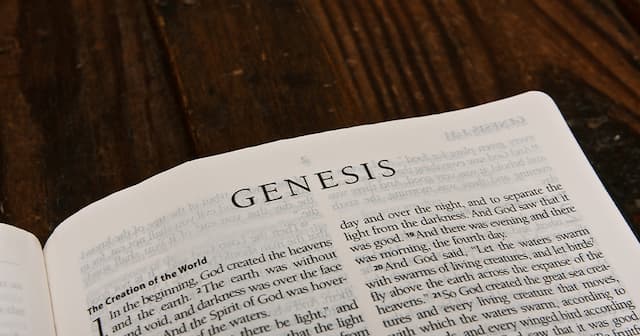Seeing Traces of the Trinity

The prophet Isaiah once described his summons to the heavenly throne to stand before God and receive his prophetic commission. He saw “the Lord sitting upon a throne, high and lifted up” (Isaiah 6:1-2). Around the throne, Isaiah saw seraphim, six-winged beings, which sang an endless refrain: “Holy, holy, holy is the Lord of hosts; the whole earth is full of his glory” (Isaiah 6:3).
That Isaiah saw one God upon the throne is no shock to us given the decidedly monotheistic shape of the Hebrew faith and the book of Isaiah particularly. But for generations, Christians have mused about the threefold repetition: “holy, holy, holy.” Few have been as brave as Athanasius to say that the seraphim by “offering their praises three times, saying ‘Holy, Holy, Holy,’ proves that the Three Subsistences are perfect, just as in saying ‘Lord,’ they declare the one Essence” (On Luke X 22 §6). Athanasius seemed to think that the seraphim saying “Holy, Holy, Holy” proved - in the logical or exegetical sense - that the one God is three Persons. At the risk of contradicting noble Athanasius, this text does not prove anything of the sort. If the seraphim had said “Holy” four times, I would not conclude that they worshiped four persons.
Still, this text may be something other than a proof. It could be simply a hint or impression of Trinity. St. Augustine believed all creation would bear witness to the Trinitarian nature of the Creator. He called these embedded hints vestiges or traces of the Trinity (vestigia Tinitatis). “Therefore all these things which are made by divine skill, show in themselves a certain unity, and form, and order … When therefore we regard the Creator, who is understood by the things that are made we must needs understand the Trinity of whom there appear traces in the creature, as is fitting” (De Trinitate VI.10.12).
Such trinitarian musings do not arise from careful exegesis of the text, but what Peter Leithart would call “theological speculation.” In the last line of Traces of the Trinity, Leithart concludes his own thoughtful ruminations: “He expects us to learn how to use everything he has revealed and named to honor, praise and tell of him, because that is the destiny for which everything was created.”
I would say it this way: God is one, but his oneness makes us want to say things in threes.
In all that his hand touches we see vestiges of the Trinity. They prove nothing in themselves and explain even less. They are not even good analogies to the Trinity in any precise way. They are simply impressions left by the Triune God.
For example, we see a trace of the Trinity in the shape of time. In a passage which obviously hearkens back to Isaiah’s experience, John recounts his own trip to heaven. “And the four living creatures, each of them with six wings, are full of eyes all around and within, and day and night they never cease to say, ‘Holy, holy, holy, is the Lord God Almighty, who was and is and is to come’ (Revelation 4:8). That last line adds something to the song that Isaiah did not share with us. Time itself carries a trinitarian imprint. What was, what is, and what will be are coequal and inseparably “time,” such that one does not exist without the other. Yet they are also quite obviously distinct. The Divine Son specifically claims to span all of it. He is “the first and the last, and the living one” (Revelation 1:17-18). “Jesus Christ is the same yesterday and today and forever” (Hebrews 13:8). God walks through our past, our present, and our future. In the very shape of time, we see a trace of his glory.
We see a trace of the Trinity in human virtues. Aristotle taught that there are four cardinal virtues, but Christian faith says there are three distinctly Christian virtues, greater than any other. Faith, hope, and love stand above all else (1 Corinthians 13:13). These theological virtues are themselves tied to time in a fashion. Faith - or trust - is allegiance to a person we have come to know in our past. Love is the present selflessness to that person in our present. Hope is the powerful confidence in that person for the future. All three distill in the Christian life. “Remembering before our God and Father your work of faith and labor of love and steadfastness of hope in our Lord Jesus Christ '' (1 Thessalonians 1:3). God is the source of our faith from the past, love in the present, and hope for the future.
Of course, above all else we see the outline of the Trinity in God’s relationship to us. This more than any other depiction is how we come to know God as triune. We are led by the Spirit who causes us to cry out to the Father and be recognized as a fellow heir with the Son (Romans 8:14–17). God is Father above us, Son beside us, and Spirit within us.
Don’t try to understand, at least not in the modern sense of the word “understand.” I think this would be folly. The Otherness of God, especially in the Trinity, is not an idea to be neatly categorized or decoded. With apologies to my Systematic Theology-loving friends, I suspect the mystics among us will have more useful things to say about the Trinity than the logicians.
Instead, simply notice the Trinity, and be in awe. See the Creator’s nature pressed into every work of his craftsmanship and each brushstroke of his artistry. As Isaiah once heard, the Trinity is not a doctrine that we study in order to procure knowledge, but rather to provoke worship.
“Holy, holy, holy is the Lord of hosts; the whole earth is full of his glory.”
Dr. Benjamin Williams is the Senior Minister at the Central Church of Christ in Ada, Oklahoma and a regular writer at So We Speak. Check out his books The Faith of John’s Gospel and Why We Stayed or follow him on Twitter, @Benpreachin.






